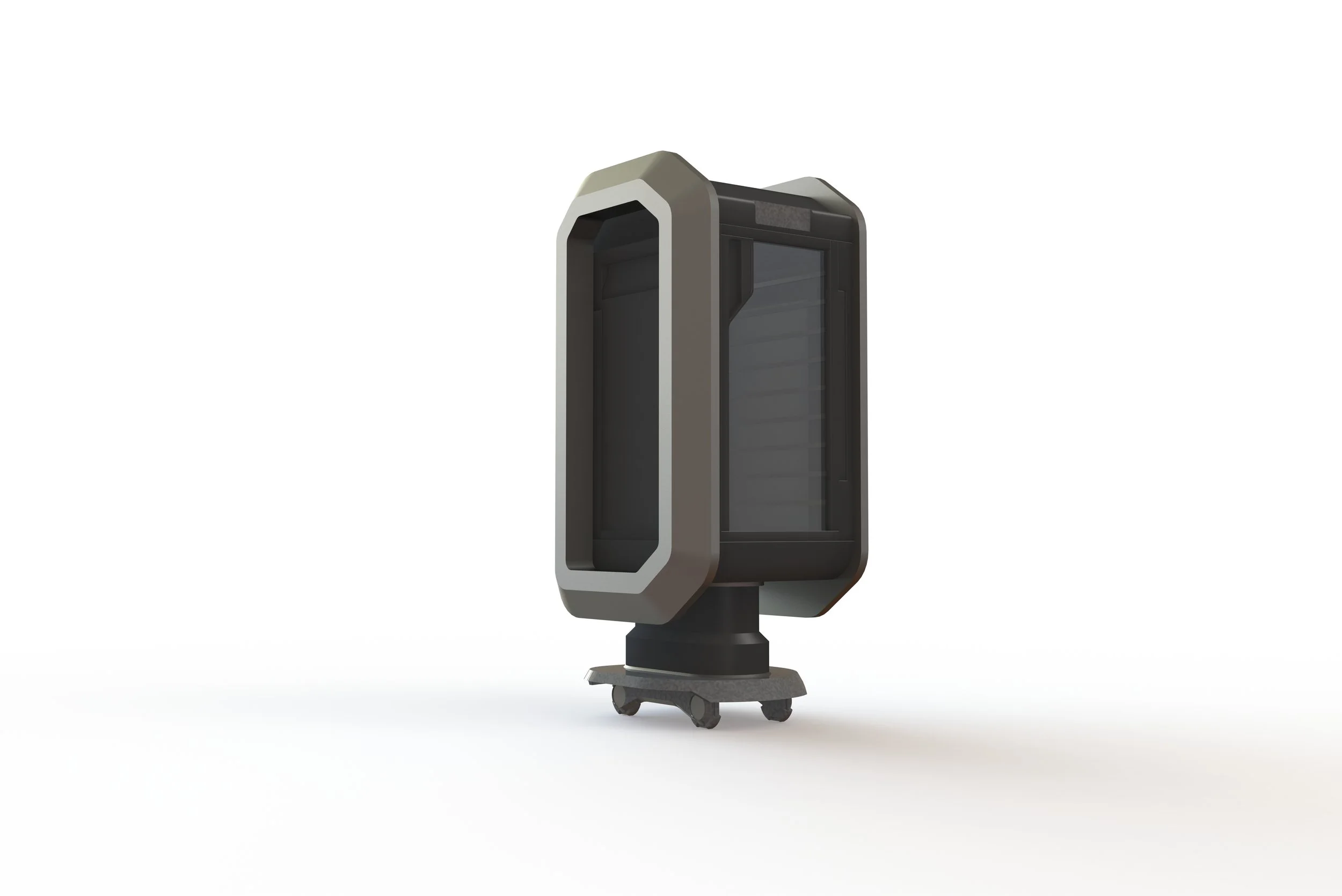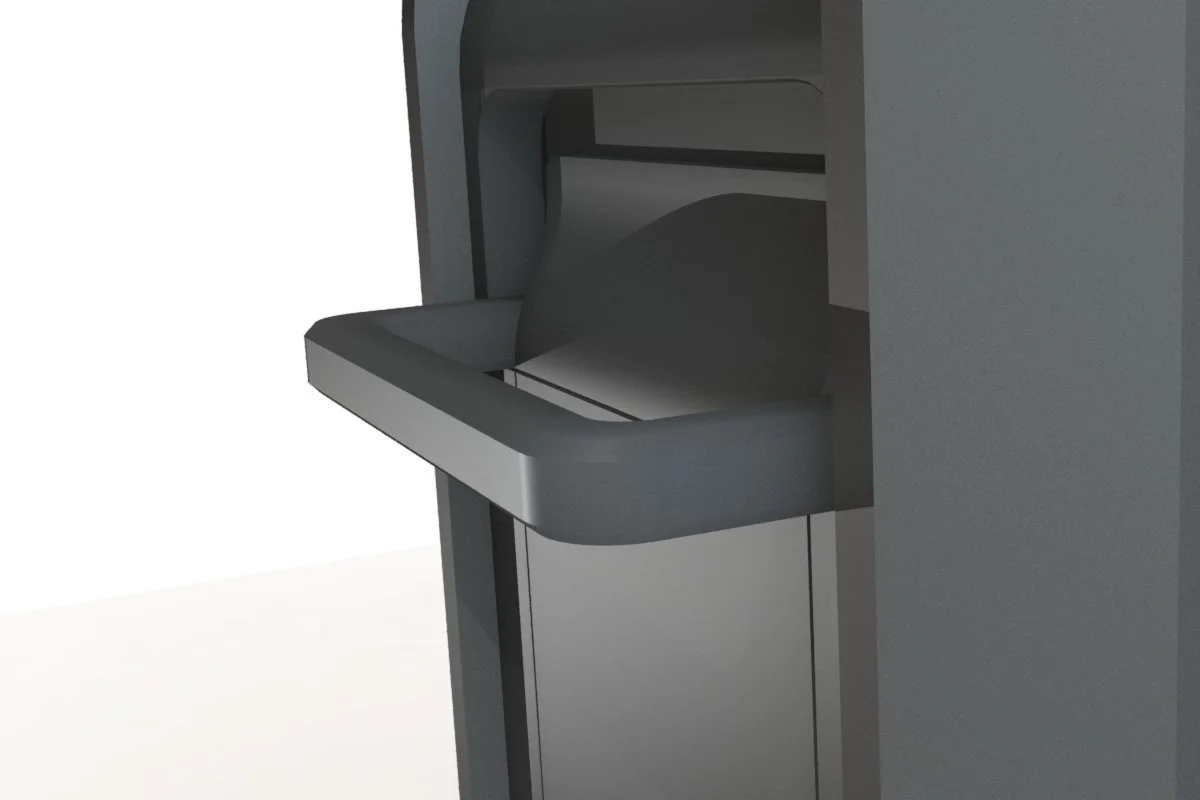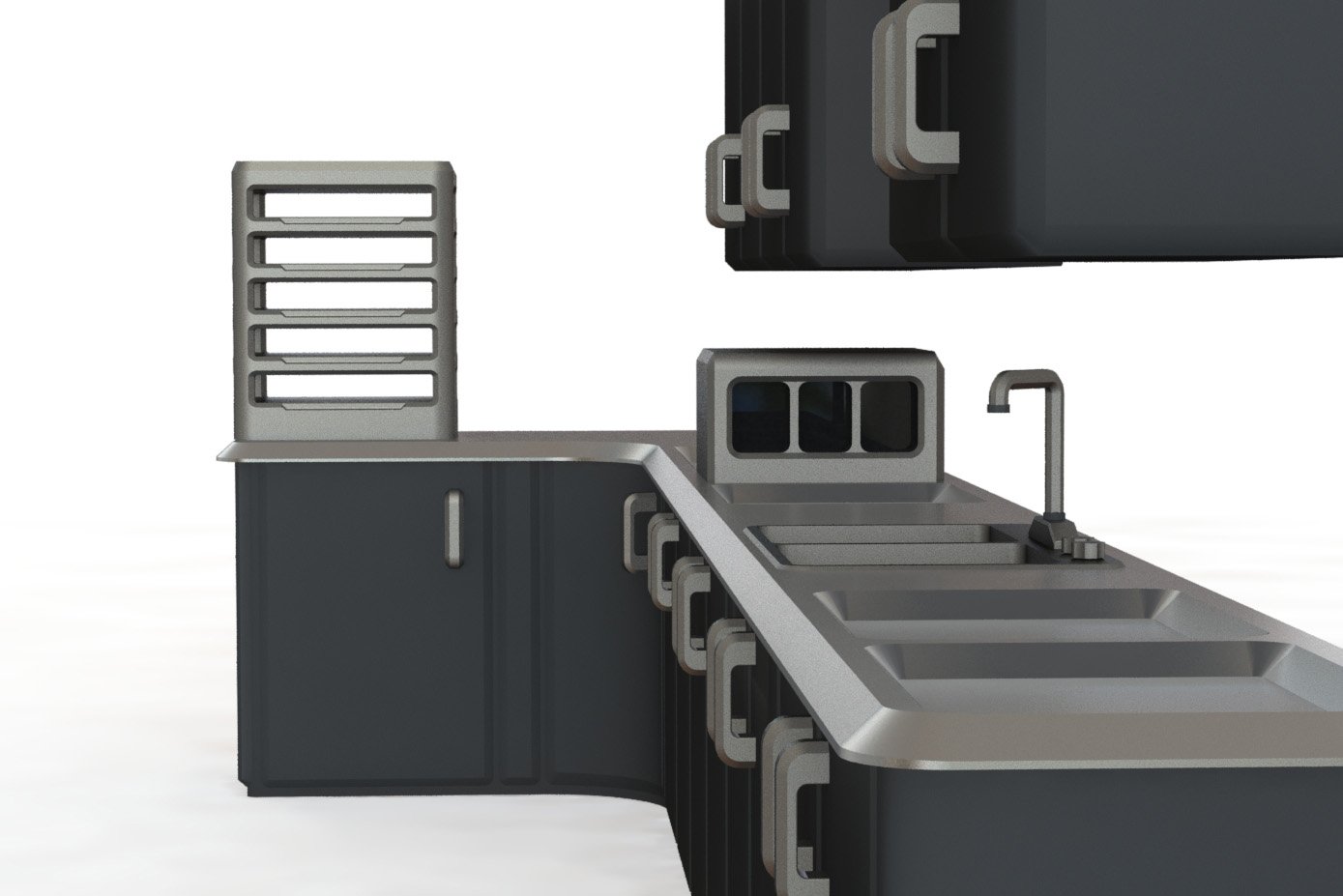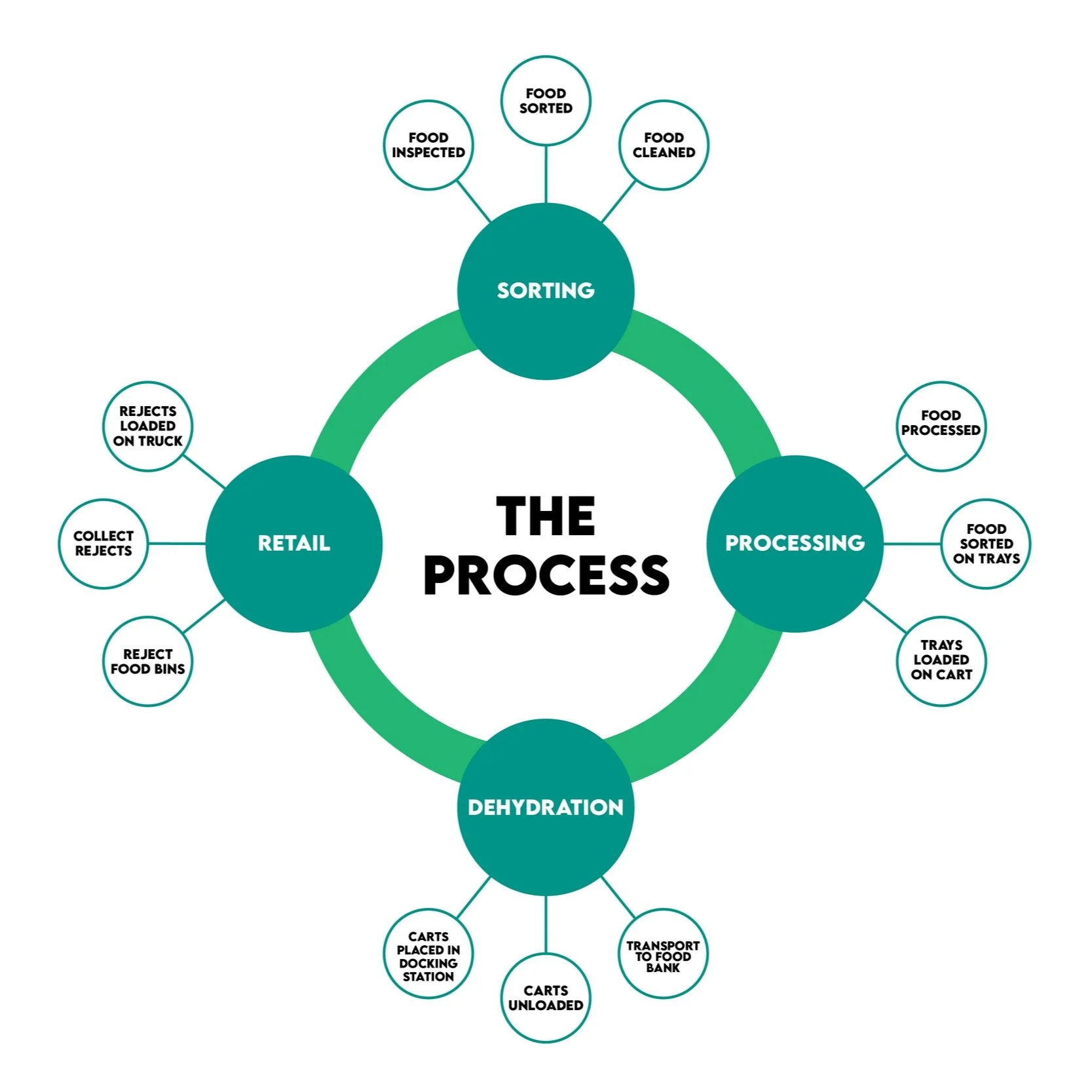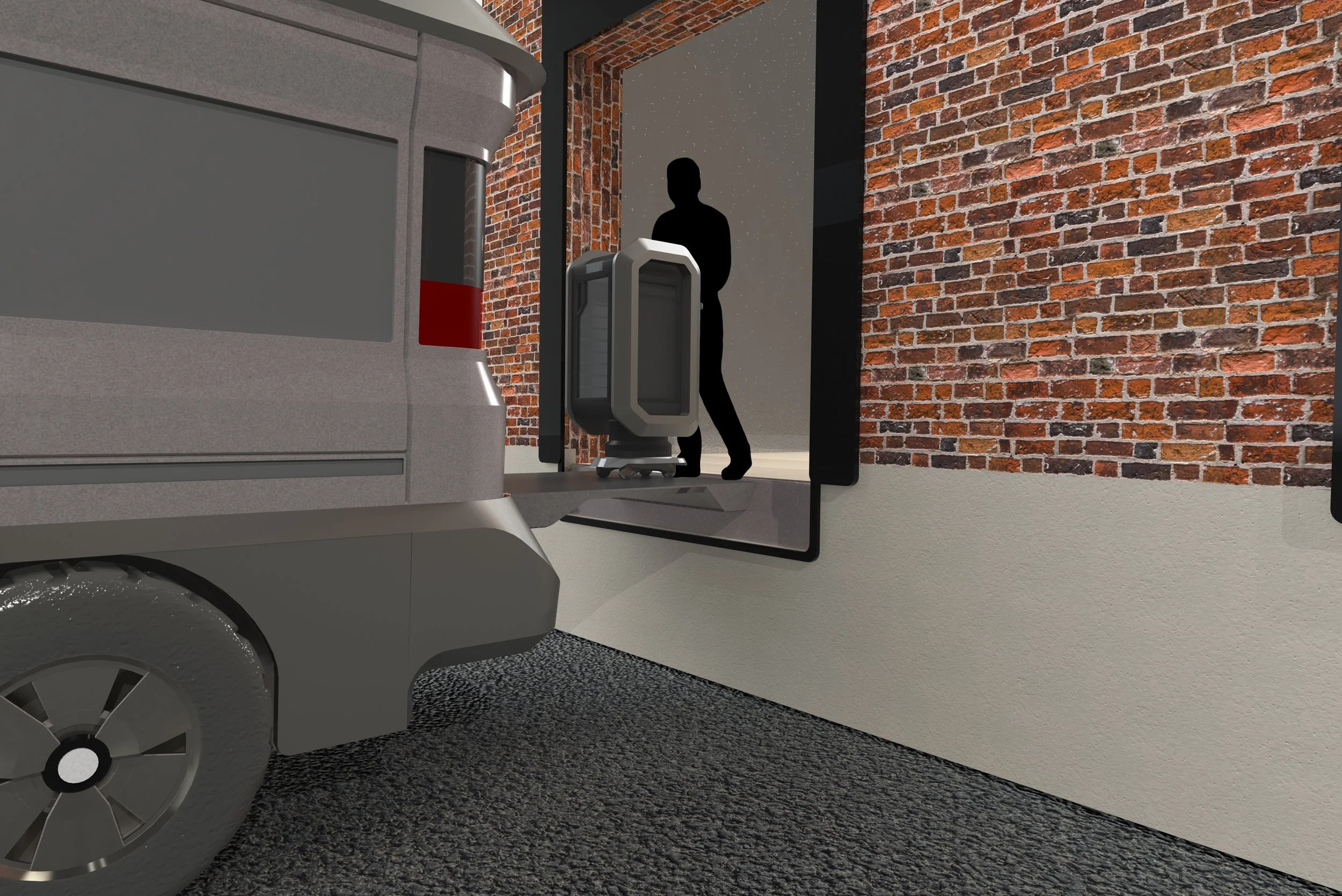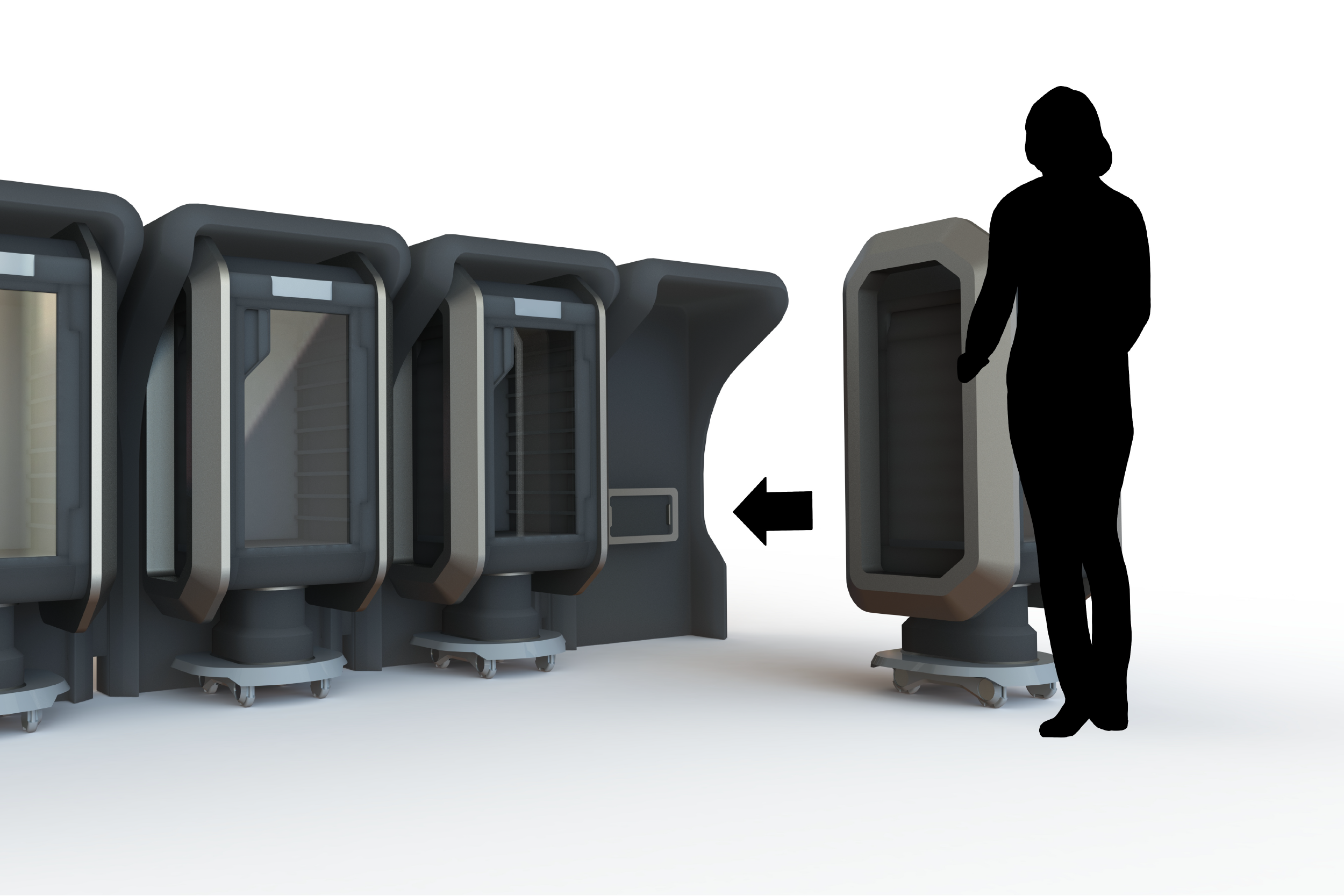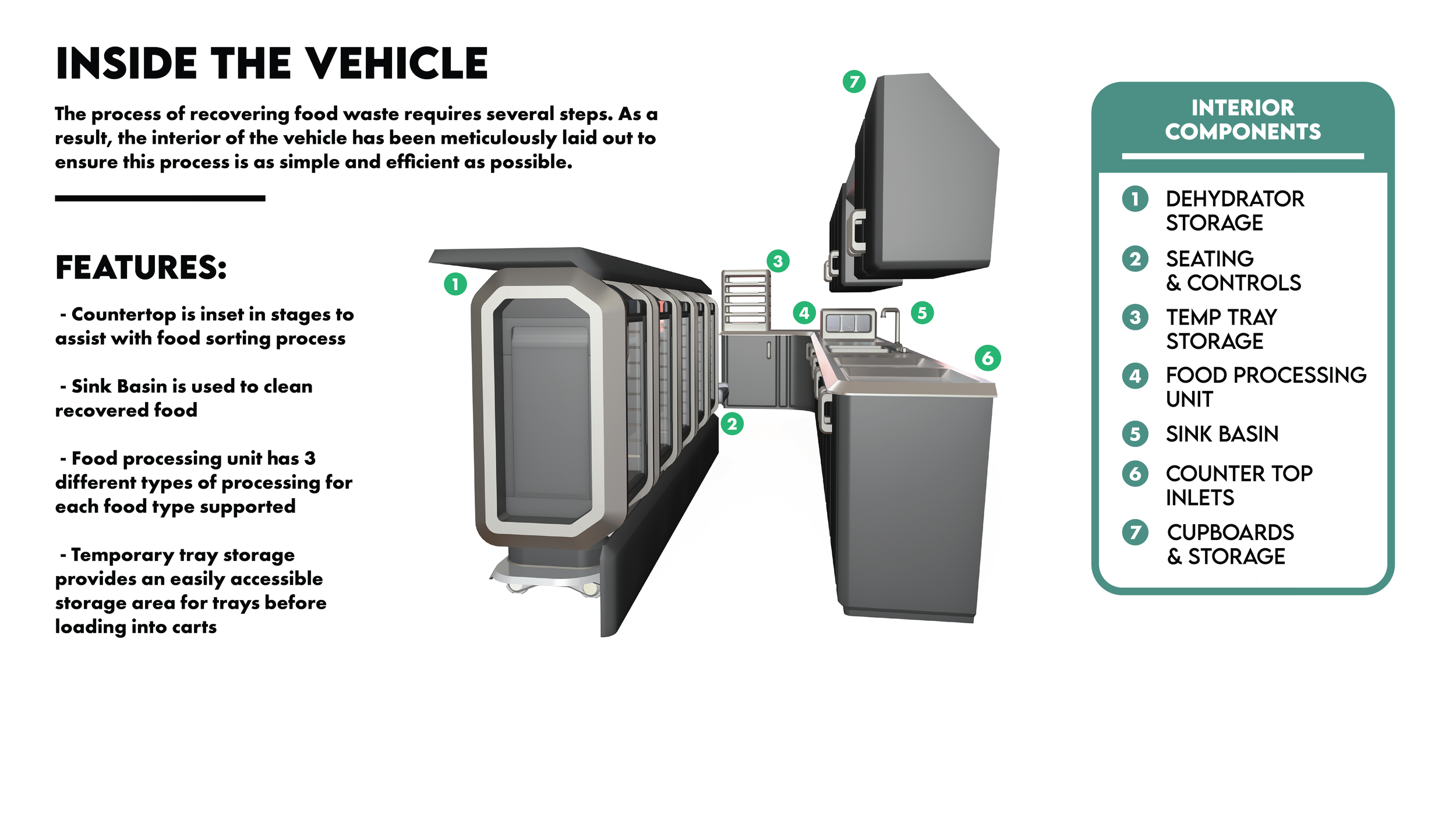
RESEARCH
SECONDARY RESEARCH
1/4 of food meant for human consumption ends up in landfills every year.
12 Full meals can be recovered from a large supermarket every day
29.3% of people around the word suffer from food insecurity
USER NEEDS
Our users are those who are currently suffering from food insecurity. As a result, we must first empathize with the user and develop a list of problems we might solve.
To do this, immediate, and latent needs are listed separately as well as potential wants/wishes of the user that we might implement later in the design phase.
INTERACTION
INTERACTION PROCESS
Mobility Bank vehicles are used to collect food waste from local food retailers.
On board, this food is evaluated, cleaned, and processed before being arranged on to trays.
Trays are inserted into dehydrator carts, and secured until all food processing is complete. Vehicles are then directed to local food banks.
Upon arrival, dehydrator carts are unloaded, and plugged into a docking station.
Carts from previous delivery will be collected, replacing the carts dropped off. The dehydration process will then perform for an extended period of time
THE PROCESS
GROCERY STORE
Incentive programs request customer involvement
Several containers installed throughout retailers letting customers sort through product themselves
Mobility Bank volunteers visit grocery stores & supermarkets to collect this waste
DEHYDRATOR CARTS
360 Degrees of movement throughout travel
Self-cleaning feature after dehydration process
Pull down handle, can be tucked away to store
DOCKING STATION
Located in each local food bank
Carts docked to proceed with dehydration process
Secures Cart in place during dehydration
INTERIOR
GALLERY


